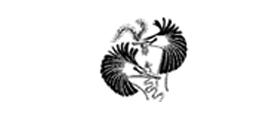- View more resources from this publisher
 Association for the Study of Animal Behaviour (ASAB)
Association for the Study of Animal Behaviour (ASAB)
Animal Behaviour: Practical Work and Data Response Exercises
These books, from the Association for the Study of Animal Behaviour (ASAB), aimed to encourage the use of more practical work on animal and human behaviour and to enable students to develop an understanding of some basic principles of animal behaviour, relevant to biology and psychology.
Although originally aimed at GCSE and post-16 level, the activities are easily adapted for students other age groups. The post-16 book suggests a number of projects which explore behaviour. A number of practical experiments are described, including:
*Orientation of brine shrimps to light
*Choice of egg-laying site by female seed beetles
*Where to feed? - decision making in pigeons
*Flexibility in the choice of a cat's sleeping site
*How fearful are humans of various animals?
*Stress in social situations
*The development of behaviour - removing a sweater
*The interpretation of a visual stimulus
*The influence of feedback in learning a skill
*Navigation in the absence of visual cues
*Constructing an ethogram
*Attitudes towards animals
*Habituation in snails
*Turn alternation in woodlice
*Chemical communication in ants
*Maze learning in small mammals
*Selective predation of coloured prey items
*Carrying behaviour of humans
Data response exercises (structured questions) are provided, and are useful as homework, starters or plenaries. These start with one or more pieces of stimulus material, such as a piece of text, a photograph, some numerical data or a drawing. Following the stimulus items there are questions that relate to them. Few of these questions require factual knowledge about animal behaviour and most can be answered entirely from the stimulus material.
Show health and safety information
Please be aware that resources have been published on the website in the form that they were originally supplied. This means that procedures reflect general practice and standards applicable at the time resources were produced and cannot be assumed to be acceptable today. Website users are fully responsible for ensuring that any activity, including practical work, which they carry out is in accordance with current regulations related to health and safety and that an appropriate risk assessment has been carried out.
Downloads
-
Animal behaviour (GCSE level) 14.77 MB





